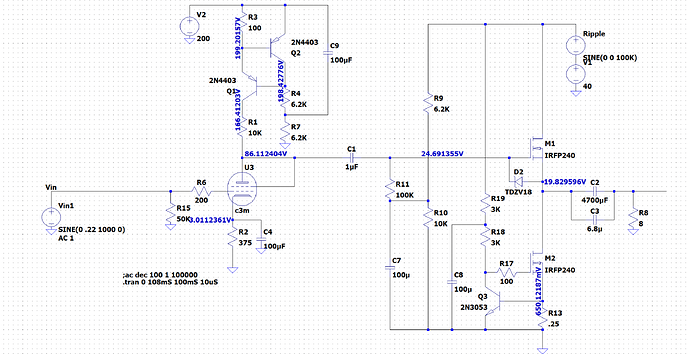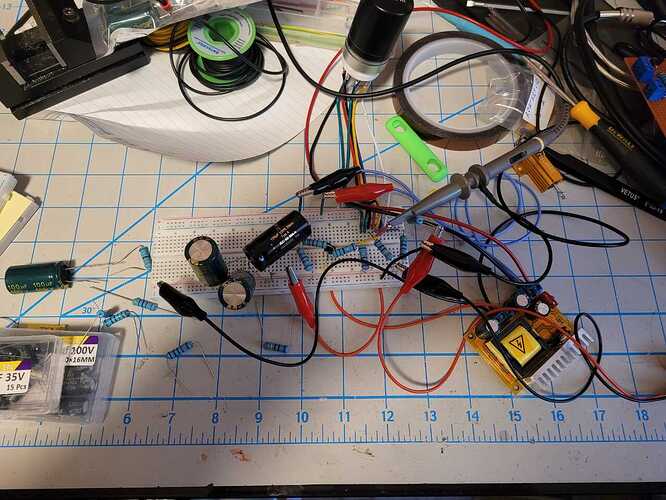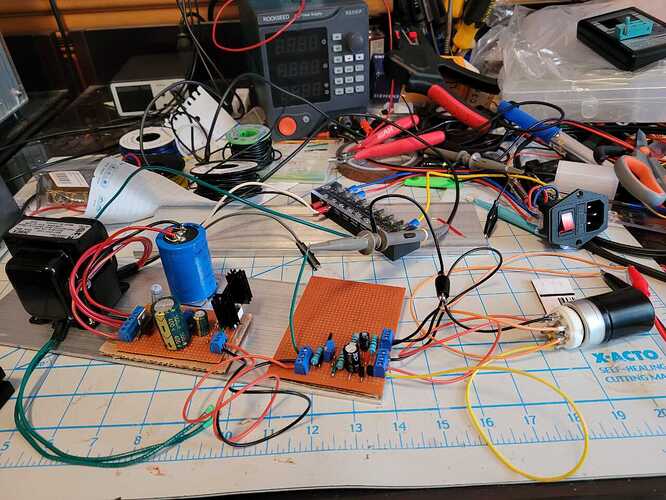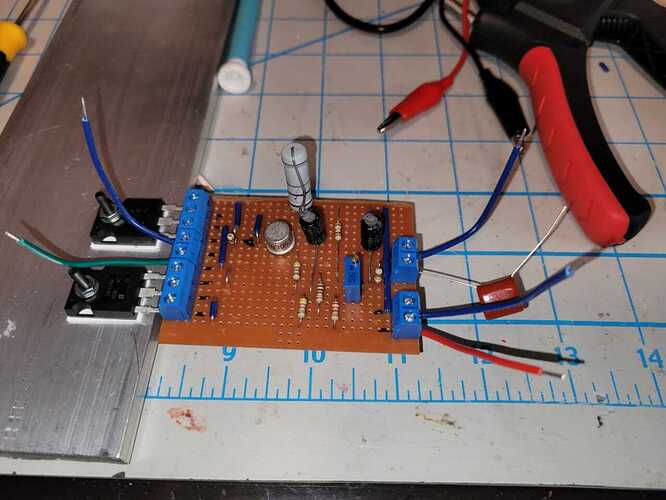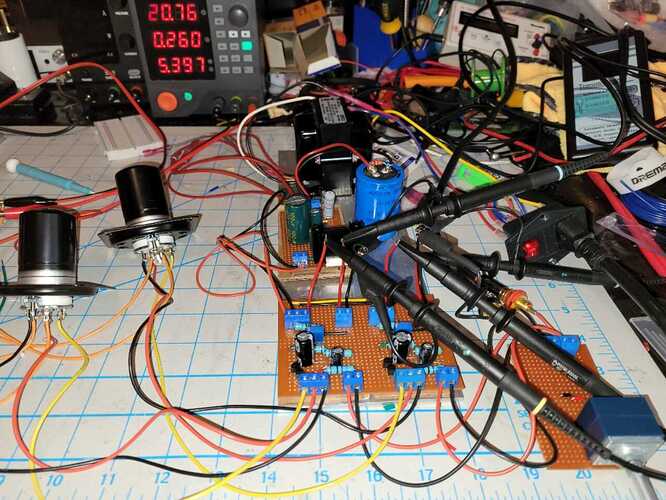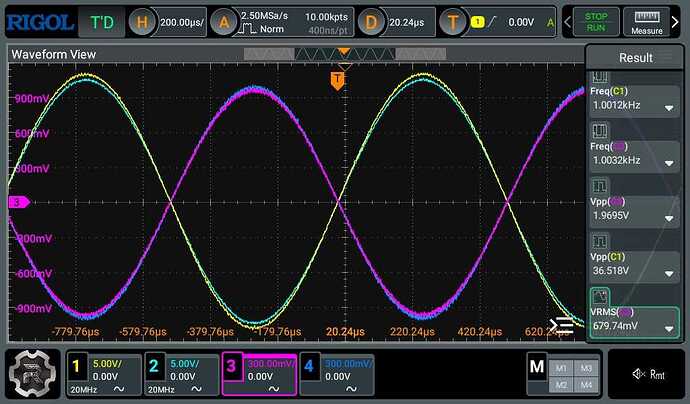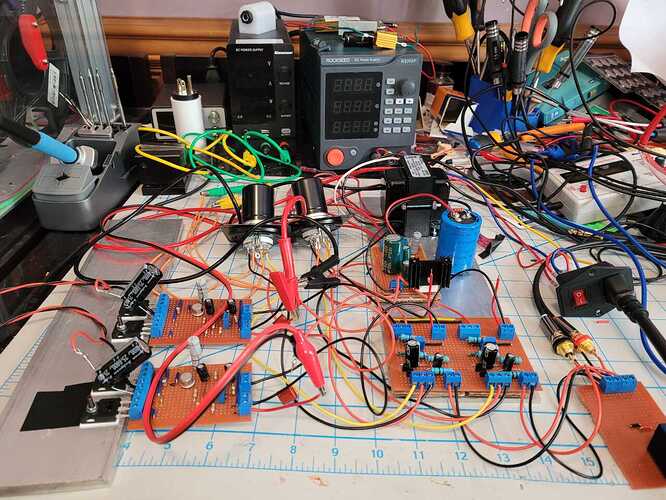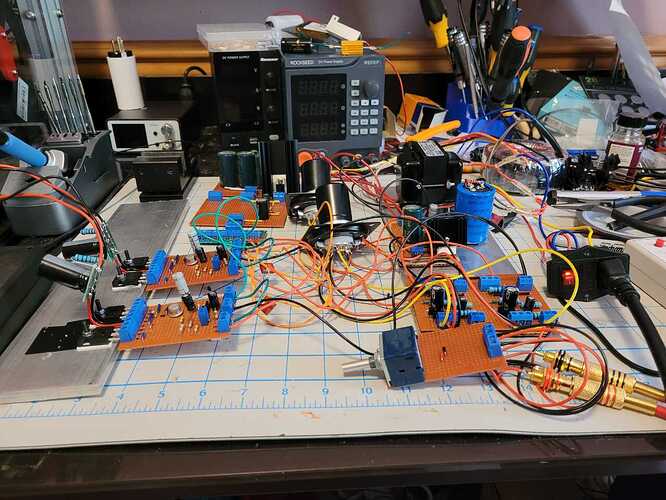I’m still playing with the 2A3 amp, but short of moving it/making a box for it, and swapping the output transformers, there isn’t a lot more I want to do with it.
I’ve been mulling the idea of a Hybrid amp.
This is what I am thinking at the moment, it will likely change.
It’s simpler than it looks, about as simple a hybrid can get, U3 (Triode strapped C3M) does all the voltage amplification and M1 is the current Buffer. No feedback.
The rest of the transistors are just acting as a pair of current sources.
According to the simulation which I’d take with a bucket of Salt (I really don’t think the C3M model is good) Maximum output is about 18W RMS into 8Ohms at about 0.5% distortion (somewhat better into 4Ohms), closer to 0.1% distortion at 1W, 2nd harmonic dominant. Of course it also claims a bandwidth of 5Hz to >300+KHz, and I highly doubt the high end of that.
I’m Somewhat enamored with the linearity of the triode strapped C3G and the C3M is a similar tube without the Lampizator Tax because of it’s 20V heater.
Lots of things I am still mulling, I certainly don’t need a 200V supply on the C3M, but I want to build and test the voltage gain circuit, since I don’t trust the Spice model for the tube, and it gives me some headroom.
I considered adding feedback which could easily drop the THD by an order of magnitude, but I’d need to run the C3M as a pentode to get enough gain, might be an interesting experiment.
I could go to +20/-20V rails on the RHS and use a DC Servo to get rid of the Output Capacitor.
If I don’t care about driving speakers I can drop the 2.5A of current running through the output mosfet quite dramatically, which would save having to have enough heatsink to dump ~43W of heat across the 2 mosfets (wonders of class A).
